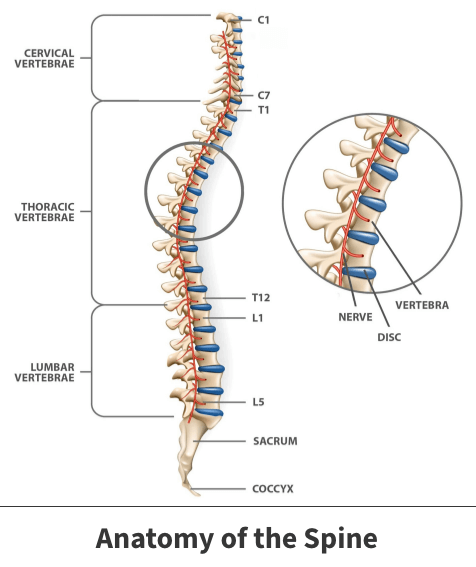Lumbar interbody fusion (IBF)
Your lower back is one of the body’s most important physical features. This part of your spine is vital for performing day-to-day functions like bending, sitting, and lifting.
You might experience pain and other life-altering effects if your spine is diseased or injured. A procedure known as lumbar interbody fusion can correct these problems.
Anatomy

Your spinal column is made up of bones called vertebrae, which are divided into subcategories depending on where along the spine they are located. For example, the lumbar vertebrae are situated in the lower back and are made up of five or sometimes six bones. Surrounding these bones are protective cushions called discs.
About
If lumbar discs become damaged or you encounter an illness, you might contract what is known as lumbar disc disease.
Causes
Lumbar disc disease is a collection of problems capable of damage. Such issues are usually divided into several categories.
- Congenital deformities – Abnormalities you are born with that may revolve around the improper formation of the spine. They can place extra pressure on lumbar discs and eventually cause deterioration.
- Degenerative diseases – lower back issues might be brought on by diseases like arthritis, which cause a gradual weakening of discs and neighboring structures.
The aging process also plays a role. Discs contain large amounts of water. As you grow older, discs gradually lose their moisture content, limiting their cushioning abilities and laying the groundwork for cracks and tears. As this damage progresses, broken discs can press against vertebrae or spinal nerves.
Any traumatic event, such as a fall from significant heights, excessive forceful contact in athletic competition, or involvement in a serious car accident, could result in immediate and significant damage to lumbar discs and surrounding muscles, bones, and tissues.
Risk factors
Your risk for lumbar disc disease rises if you:
- Work that requires repeated heavy lifting or bending, like construction workers and airline baggage handlers
- Have a family history of illnesses or arthritis, degenerative bone, or muscle issues
- Are excessively overweight or obese
- Smoke cigarettes or take nicotine through other sources
- Forceful contact sports like football
- Are of advanced age
- Sit for extended periods like working at a computer terminal or watching television
Poor posture can also eventually lead to the condition. Prolonged stretches of inactivity can weaken back muscles, which places additional strain on lumbar discs.

Types of lumbar interbody fusion
- Posterior lumbar interbody fusion (PLIF) – Surgeons make an incision in the back, remove damaged discs, and fuse vertebrae together using grafts
- Anterior lumbar interbody fusion (ALIF) – The spine is approached from the front, the faulty disc is removed, and grafting materials are inserted to fuse vertebrae
- Lateral lumbar interbody fusion (LLIF) – Small incisions are made on the side of the body to repair damaged or diseased discs
- Transforaminal lumbar interbody fusion (TLIF) – A single bone graft connects vertebrae from the side instead of fusing two bone grafts from the backside
Recovery
It is difficult to determine the specific length of time you will need to recover fully. This will depend on the procedure you received, how severe your degenerative disc disease was, your overall physical and biological health, and your level of physical activity. Most procedures are followed by a period of physical therapy designed to help regain any lost strength or motion ranges.
Videos
Related specialties
- Anterior Cervical Corpectomy & Discectomy
- Artificial Disc Replacement (ADR)
- Bone Cement Injection
- Degenerative Disc Disease
- Diffuse Idiopathic Skeletal Hyperostosis (DISH)
- Discectomy
- Discitis Treatment & Information
- Epidural Injections for Spinal Pain
- Foraminotomy
- Interlaminar Implants
- Interlaminar Lumbar Instrumental Fusion: ILIF
- Kyphoplasty (Balloon Vertebroplasty)
- Kyphosis
- Laminectomy: Decompression Surgery
- Lumbar Epidural Steroid Injection
- Minimally Invasive Spine Surgery
- Outpatient Spine Surgery
- Pinched Nerve
- Piriformis Syndrome
- Sacroiliac Joint Pain
- Sciatica
- Scoliosis
- Spinal Fusion
- Spondylolisthesis & Spondylolysis
- Vertebroplasty
- Whiplash & Whiplash Associated Disorder (WAD)
